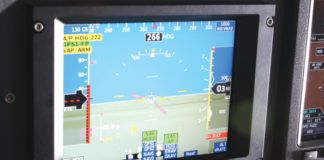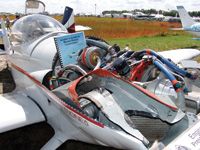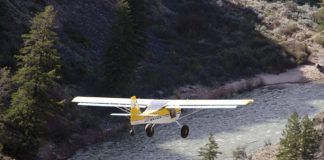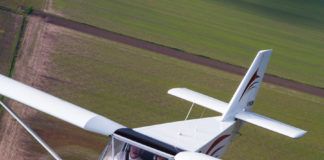
Digital Edition
I really love KITPLANES, as it is one of the few aero publications that does not consider its readers to be technomorons. I especially like the Wind Tunnel articles, but the one How big should a wing be? got a bit silly showing the altitude to eight significant figures in Figure 1 and not stating the units. And why 5259.845 (feet?). Wouldnt choosing 5000 feet have been better engineering writing?
Arthur Thompson
Could have been, but sometimes Excel likes to mess with us.-Ed.
Grins for Grimstead
Just a quick compliment for Bob Grimstead and his report on the Taylor Monoplane. While I was intrigued by the airplane, it was Bobs writing style that I found most enjoyable. All too often flight reports (not just in KITPLANES) tend to the technical without generating a real feel for the experience. Bobs writing style is just the opposite. I found myself grinning throughout my reading and was a little disappointed at the end-because it was over. Great job, Bob! I hope to read more from you.
Gene Herndon
Compound Modifier
A big problem with the turbo-compound engines was the violation of the KISS-keep it simple, stupid-rule. Those extra turbines and gearboxes were just trouble waiting to happen. Some of those engines in that era had as many as 28 cylinders, and even a simple change of spark plugs in those corn on the cob engines was a major job. Materials available today would no doubt increase the horsepower and reliability.
But we do not really want the automotive experience to be repeated. In the 1980s, Detroit had most of us tunnel-visioned on gas mileage-and sure the new cars saved a bit of gas-but what they did not tell us was the maintenance cost went up. A simple fuel-pump change that took 20 minutes tops (10 more if you chose to rebuild the thing yourself with a kit) now requires you to drop the gas tank. Expect a bill for $1000. Have just one sensor failure, and by the time you fix it, you will have wiped out several years of fuel savings.
One thing that always bugs me with the common engines is the piston (and crankshaft counterweight) has to travel up to TDC (top dead center), then it is forcibly yanked back to BDC and again reverses itself. This wastes a lot of energy. If we are going to invest money recovering exhaust heat, we are better off investing it in engines such as the Wankel, which is turbine smooth. It also may be more versatile in terms of fuel type needed.
Tony Lam
I read the [turbo compounding] article with great interest, but found some things in error. The Bearcat came from the factory with the R2800. With regard to the R3350, it had ADI (alcohol injection) for use on takeoff and a two-speed, single-stage supercharger. I flew the C-119G for two years and never had a problem with valve failure.
Don McFarland
Deneke Fans
I just wanted to write to thank you for your article on John Deneke. This man is the epitome of inspiration to anyone who is building his own aircraft. After eight years of constant, but slow progress on a Velocity kit, I have often felt the struggle to keep going and get finished, and sometimes feel overwhelmed by the quantity of work that still remains to get the project done and airborne. I know a lot of projects that reach some intermediate stage and become abandoned because the builder just loses the will to continue. Mr. Deneke has chosen to follow his passion and build an aircraft from scratch in an area of the country that sees the extremes of long, cold winters and hot, humid summers. He does this without the use of his legs, and he does this alone in a shop that he built himself. I will never complain about the work involved in my measly 2000-man-hour project ever again. I look forward to visiting with Mr. Deneke at the homebuilders parking area at Oshkosh sometime soon. Need to sign off now-its 4:45 and I need to go out to the hangar and get to work.
Alex Balic
Seedlings
I came across your magazine while waiting for a prescription to be filled, and have been subscribing for two years now. I have now received instruction in a seaplane, a two-place pusher, powered parachute and tandem hang glider, and Ive narrowed my choice of first aircraft to a handful that will meet my needs and desires. I plan to attend Oshkosh or Sun n Fun before I make my final decision.
All of this came about from a casual glance at your magazine. Before that, I had no idea you could actually build your own plane. I am saving many of your magazines, which I feel will help me with the building process. I especially like the editions on covering and painting.
Actually, its the issues I don’t save that inspired me to write. I work in a busy medical facility, and in our waiting room we have many magazines for patients to read. I thought I would leave old copies and perhaps plant some aviation seeds. Ive planted three in the last month, and all three are now gone, I assume taken home by aspiring pilots. As I can attest, one seed can take more than three years to produce a pilot or secure the purchase of a homebuilt aircraft. So plant on everyone, and lets help this industry grow!
Steve Lewis
Write to KITPLANES at [email protected]




